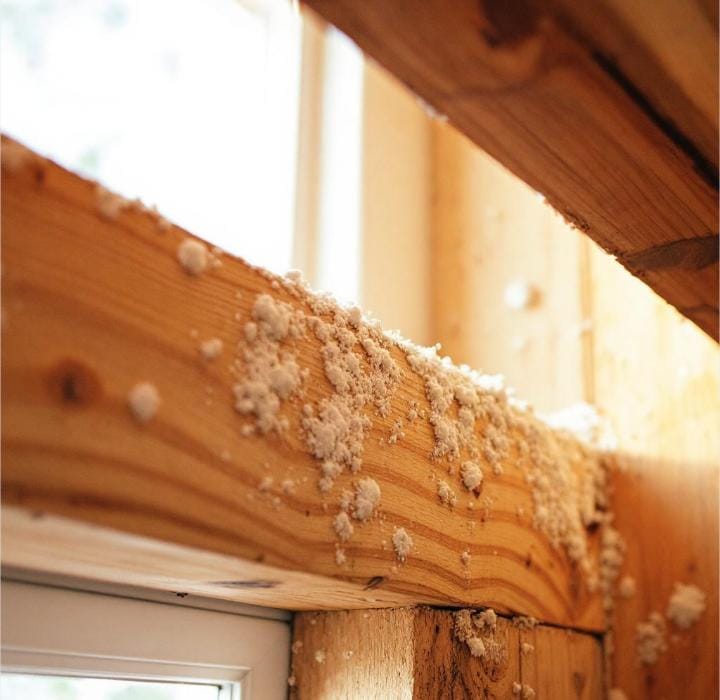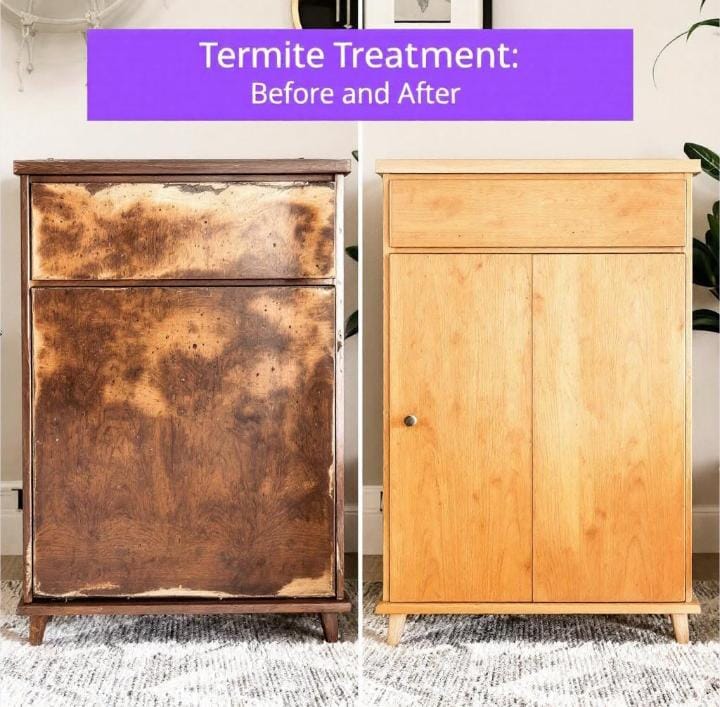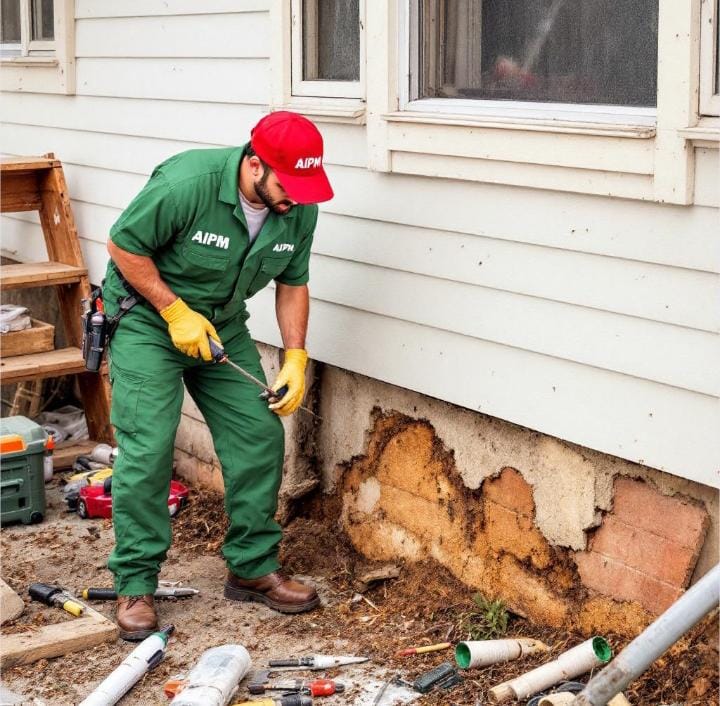Pest Library
How to Identify &
Get Rid of Termites
Termites are silent destroyers that often go unnoticed until significant damage has occurred. Knowing how to spot early signs of termite activity and taking quick action is essential to protect your home or building.

Order Blattodea
IDENTIFY
What do Termite look like?
Termites are small, pale-colored insects that often go unnoticed because they live hidden within wood, soil, or walls. The most common type seen is the worker termite, which has a soft, creamy white body, straight antennae, and no wings. Soldier termites are similar in size but have large, dark brown heads with strong jaws used for defending the colony. The most visible type is the swarmer or reproductive termite, which is dark brown or black with two pairs of long, equal-sized wings that extend beyond the body. These swarmers are often mistaken for flying ants but can be distinguished by their straight antennae, uniform waist, and wings of equal length. Piles of discarded wings near windows or doors are a common sign of a nearby termite colony.
Post-Construction Termite Treatment by AIPM
Procedure:
1. Inspection
Thorough site inspection is conducted to locate termite activity and potential entry points.
2. Drilling:
Precise holes (at junctions of the floor and wall, approximately 1-foot intervals) are drilled using advanced equipment.
3. Chemical Injection:
WHO-approved, certified anti-termite chemical is pressure-injected into the holes to reach termite colonies.
4. Vacuum Treatment:
Areas with hollow or termite-affected wood may be vacuumed to remove dust and loose particles for deep chemical penetration.
5. Filling & Sealing:
Once the chemical is applied, the drilled holes are properly filled and sealed with white cement to restore appearance and safety.

Residential Areas
Bathrooms: Behind toilets, under sinks
Basements/Garages: In cracks, under clutter

Public And Commercial Spaces
Warehouses: Among boxes, under pallets
Grocery Stores: In stockrooms, under shelves
Outdoor Environments
Gardens: Under mulch, around plant bases
Sewers/Drains: Inside pipes, near manholes

Benefits of AIPM Post-Construction Treatment:
✔️ Long-term Protection against termite infestation
✔️ Use of Certified, Eco-safe Chemicals
✔️ Trained and Professional Technicians
✔️ No Damage to Existing Structures
✔️ Odorless and Safe for Residents and Pets
✔️ Customized Treatment Based on Infestation Level
✔️ Affordable Annual Maintenance Contracts (AMC)
✔️ Detailed Service Report with Photographs
AIPM believes in “Protecting Your Space, the Expert Way” — ensuring every corner is treated with care and precision.

Pest Treatment
How AIPM Team Works?
✅ Certified, trained technicians
✅ Safety gear and chemical-handling protocols
✅ Real-time treatment updates with before-after images
✅ Service completion report + digital invoice
✅ Post-service guidance and Customer feedback
FAQ
Frequently asked questions.
Yes, when performed by licensed professionals using approved termiticides, the treatment is safe. Experts take precautions to ensure that the chemicals are applied correctly and do not pose any health risks to occupants.
Signs like hollow-sounding wood, mud tubes on walls or foundations, discarded wings, or visible damage to furniture and structures are indicators of termite activity. A professional inspection can confirm if treatment is needed.
Yes, we prioritize safety by using child- and pet-safe solutions, placing traps and baits in secure areas, and choosing methods that minimize exposure to harmful substances.
Ensure proper sanitation by cleaning regularly, store food in sealed containers, fix leaky pipes, clear clutter, and seal all cracks and openings that rodents might use to enter your property.
In most cases, no. Our rodent control methods are minimally invasive, allowing you to remain in your home during treatment. However, for specific treatments, our technicians will advise if temporary relocation is needed.
Eliminate pests and prevent future problems.
- +91 9607171409
